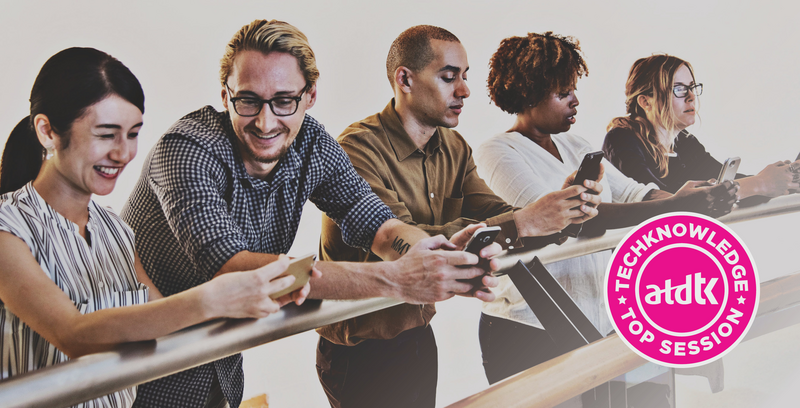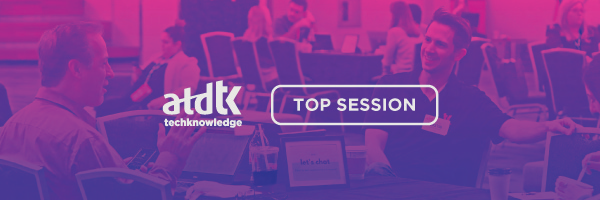ATD Blog
TK Top Session Feature: Build an AR Gamified Interaction Without Programming
Thu May 21 2020


At ATD Techknowledge 2020, I facilitated a playground session called “Build an Augmented Reality: Gamified Interaction Without Programming.” The playground contained six learning stages with different themes and experiences and more than 50 focused sessions. Participants wore headsets and listened to the session by tuning in to the proper channel.
Within the L&D profession, there’s a lot of misunderstanding about what augmented reality (AR) is, what it can do, and how individuals and companies can implement it. This can make it a challenge to get everyone at your organization—and even your own team—on board with what they need to know and do to make an AR program success. In my TD At Work issue “Seeing the Possibilities With Augmented Reality,” I clarified these misunderstandings, providing a step-by-step guide for designing successful AR learning solutions.
Session Objectives
My goal for my ATD TechKnowledge 2020 session was to introduce augmented reality as way to enhance an impactful instructor-led training program. I believe impactful learning programs share these traits:
The content grabs learners’ attention.
The content enables experimentation and “learning by doing.”
The content exploits the most natural way of learning: playing.
The content is made easily available after the learning experience so it can be repeated as needed.
During the session, I demonstrated how to build an interactive augmented reality experience using an off-the-shelf development tool: Zapworks from Zappar. The experience was delivered as an escape room with digital clues used to solve a puzzle. The goal was to provide an augmented reality project that participants could recreate when they returned to their office.
Setting Up For Success
Most augmented reality experiences require the participant to download the application to their smart device. For the ATD TechKnowledge session, after installing the Zappar app, particpants tested access by pointing their device’s camera at a zapcode, which is an AR-trigger graphic that activated the experience. I used a video with sound so I could hear that participants were accessing the correct trigger.
It is essential to test the AR experience before participants begin to ensure that everyone had downloaded the application and know how to launch it. If a participant cannot do this, have them partner with someone who has correctly loaded the app.
Ground Rules and Hands-On Learning
Next, I explained how the escape room would operate. Stationed in the playground area, I had printed sheets with numbers and zapcode triggers. Each participant was provided a list of questions that matched a clue found within a zapcode trigger, and they could scan the triggers in any order.
Each graphic provided a numeric clue. In some cases, the clue was embedded in a graphic; in other cases, they had to read a web page to find the correct number. And one of the clues was to seek out a person in the area to retrieve the number.
Essentially, the content was reinforcement of material we had discussed earlier in the session. Participants had to add up all the clues and provide a final answer to me. The first person with the correct answer was the winner. Everyone had a lot of fun finding the clues and coming up with the correct answer.
Takeaways to Action Items
After the exercise, I showed everyone how I created the triggers in Zapworks. Then I challenged them to go back to their organizations and try to recreate what they had learned. Remember: when you are introducing an immersive experience, you must have an example that will showcase what you can do so everyone can envision future projects.
I have done this exercise with a number of groups with great success. I was thrilled to hear that the session was well-received at ATD TechKnowledge, and I look forward to sharing it again soon.
